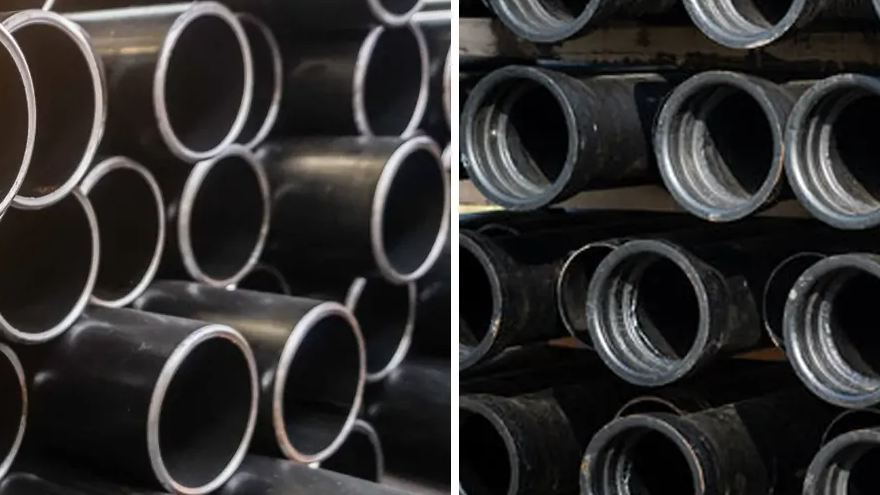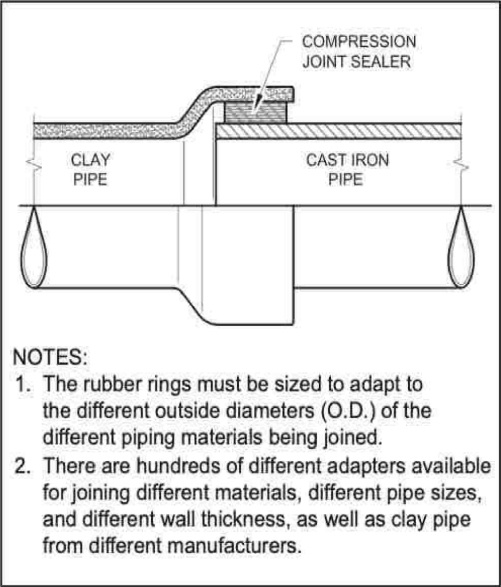The Differences Between Steel Pipes and Cast Pipes
2025-01-03 14:27:06 hits:0

In industrial and construction fields, steel pipes and cast pipes are two common types of pipes. While they share many overlapping uses, there are significant differences in terms of material, manufacturing processes, performance, and application scenarios. This article will explore the main differences between steel pipes and cast pipes from the following aspects.
1. Material and Manufacturing Process
Steel Pipes
Steel pipes are typically made from carbon steel, stainless steel, or low-alloy steel, and are manufactured through welding or seamless processes. Seamless steel pipes are made by piercing and stretching steel billets, while welded steel pipes are formed by rolling steel plates into a pipe shape and welding the seam.Cast Pipes
Cast pipes are primarily made from gray cast iron or ductile iron. In the manufacturing process, molten metal is poured into molds and cooled to form the pipe. This process preserves the graphite structure of the iron, giving cast pipes unique properties.
2. Mechanical Properties
Steel Pipes
Steel pipes have higher strength, toughness, and impact resistance, and can withstand significant internal and external pressures. They are commonly used in scenarios requiring high strength and corrosion resistance, such as high-pressure pipelines and oil transportation.Cast Pipes
Cast pipes have relatively lower strength but possess good compressive strength and shock-absorbing properties. Ductile iron pipes, due to their spherical graphite structure, outperform regular cast iron pipes, especially in terms of corrosion resistance and ductility.
3. Corrosion Resistance
Steel Pipes
Ordinary steel pipes are prone to rust and usually need to be galvanized, coated, or made from stainless steel to improve their corrosion resistance. Even so, in acidic or highly saline environments, stainless steel may still face limitations.Cast Pipes
The graphite structure in cast pipes provides some natural corrosion resistance, especially in ductile iron pipes, which perform excellently in buried water and wastewater pipeline systems.
4. Application Scenarios
Steel Pipes
Steel pipes are widely used in high-pressure pipelines, building structures, boiler manufacturing, and oil and gas transportation. Due to their high strength and durability, steel pipes are also common in high-temperature and high-load environments.Cast Pipes
Cast pipes are mainly used in low-pressure systems, such as urban water supply, drainage pipelines, and underground infrastructure. Their excellent corrosion resistance and shock-absorbing properties make them ideal for these fields.
5. Cost
The production cost of steel pipes is usually higher than that of cast pipes, especially for high-quality stainless steel pipes. Cast pipes are more economical due to their simpler manufacturing process and material costs, making them an attractive choice for large-scale municipal projects.

Conclusion
Steel pipes and cast pipes each have their unique advantages and are suitable for different application scenarios. Steel pipes, with their high strength and broad adaptability, play an important role in high-performance applications. Cast pipes, with their corrosion resistance and cost-effectiveness, are widely used in urban infrastructure.
Choosing the right pipe material requires considering the specific project requirements and weighing factors such as strength, corrosion resistance, cost, and environmental conditions.

 en
en  fra
fra  de
de  ru
ru  gle
gle  th
th  ara
ara  it
it  jp
jp  kor
kor  zh
zh 


